This post may include affiliate links.
If you make a purchase, I'll earn a small fee at no extra cost to you.
Growing potatoes in containers is the easiest way to get a huge harvest. Learn potato planting tips and what size container you need for growing potatoes.
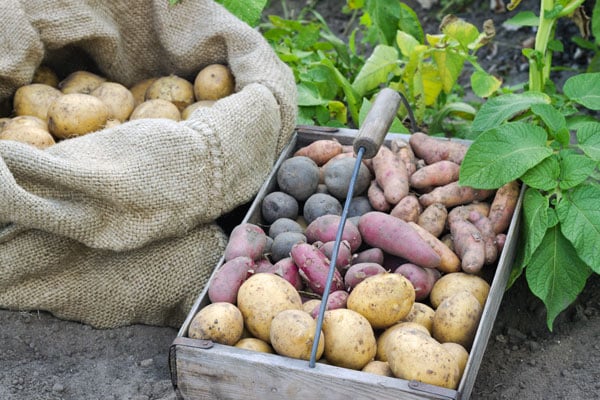
Thank you to Smart Pot® for sponsoring this post.
I’ve mentioned that I got most of my gardening knowledge from Grandpa. He often grew potatoes in his large garden, but I never saw him grow them in containers. (I suppose when you have 10 acres to work with, you don’t need small-space gardening techniques).
Since I don’t have a lot of room in my tiny backyard, I figured that I wouldn’t be able to grow potatoes. They can be a large plant, and I’ve tried to grow them in the past without much luck. See these potatoes? They’re supposed to be full-sized Russets and Red Bliss. Ahem.
With a bit of research and some pointers from the good folks at Smart Pot, I’m excited to say that prolific, prodigious potatoes-in-pots are perfectly possible.
In fact, they’re now a contender for my Favorite Vegetables for Container Gardening list. You can grow potatoes in large or small pots, and harvesting your potatoes from containers is much easier than harvesting them when they’re planted in the ground.
Here’s everything you need to know about growing potatoes in planters, pots, or containers.
Best Types of Potatoes for Container Planting
Some vegetables, like zucchini, require that you choose special container varieties. That’s not the case with potatoes. As long as you have the right size pot, you can plant any kind of potato in containers.
Potatoes aren’t grown from seeds but from seed potatoes. Important! Please don’t plant grocery store potatoes, even if they’re sprouting. Store potatoes have probably been sprayed with pesticides and fungicides, and could carry numerous diseases that will infect your plants and soil for years.
Always use certified disease-free seed potatoes to ensure the safety of your crop. The good news is that each pound of seed potatoes you plant can yield up to 10 pounds of potatoes!
Best Containers for Planting Potatoes
Potatoes need frequent watering and good drainage. This seems like a contradiction, but that’s one of the reasons Smart Pots are the best containers for planting potatoes.
Smart Pots are fabric containers for growing vegetables, fruits, or flowers. They are made in the USA from a patented, BPA-free fabric that allows for easy drainage and supports healthy root growth.
Since potatoes grow underground, it’s important that your potato plants have healthy roots. Have you ever bought a plant in a plastic pot and found that the roots are wound around and around inside the pot? This stresses the plant and it cannot thrive.
Instead, when you plant in a Smart Pot, the roots do something called “air pruning.” This means when the roots reach the edge of the Smart Pot they stop growing and branch out, instead of winding around and around. This forces the roots to create fibrous, feeder roots which are better for taking up water and nutrients.
Don’t Use These Containers for Potatoes
Although you’ll see articles about these all over the internet, there are some containers you should not use for planting potatoes.
Tires: besides having questionable aesthetic value, tires are made with toxic chemicals including “large number of hazardous substances including PAHs, phthalates, antioxidants (e.g. BHT, phenols), benzothiazole and derivatives, among other chemicals.” (source) You don’t want these chemicals leaching into your family’s food.
Containers made of pressure treated wood: wood is pressure-treated to prevent rot, mold, and insect infestation. The wood is treated with chemical pesticides that are not safe for use around food. (source)
Potato towers: have you seen the “grow 100 lbs of potatoes in 4 square feet” container? While the concept is appealing, it is certainly overkill. A tall wooden container won’t make any more potatoes than a well-tended Smart Pot of the right size. Which leads me to…
The Best Container Size for Potatoes
What’s the best size container for potatoes? Just like Grandpa used to say…it depends.
Potatoes will grow best when they have room to spread out. Crowding will cause smaller yield and smaller potatoes. Since I have a small amount of space to work with, I prefer to plant multiple potatoes in a single large container.
How many potatoes can I plant in a container?
A good rule of thumb is one potato plant per 3 gallons of soil. Here’s a chart that will help you determine how many potatoes to plant in your container.
| Container size | Number of plants |
| 1 gallon | not recommended |
| 3 gallon | 1 potato plant |
| 5 gallon | 2 potato plants |
| 10 gallon | 3 potato plants |
| 15 gallon | 5 potato plants |
| 20 gallon | 7 potato plants |
Smart Pots come in many different sizes, and are durable and reusable. You can try a small potato crop in a 5 gallon pot, or go big (as I did) in a 15 gallon Smart Pot.
Preparing to Plant
The great part about growing potatoes in containers is that you can place your pots anywhere in your yard to get the 6-8 hours of sunlight that potatoes need. While most planters are really heavy and hard to move, Smart Pots are lightweight and have sturdy, webbed handles. This makes them easy to move around your garden.
Please don’t scoop up a bunch of dirt from your yard for your potatoes. Garden soil is too dense and could have fungus, microbes, seeds, bugs, or other critters that will damage your plants. Potatoes prefer loose, slightly acidic soil. You can either add some compost to your container garden soil or use packaged soil. I used EB Stone Rose Grow Planting Mix with great success.
You’ll get more bang for your seed potato buck by cutting large seed potatoes in half. It’s ok to cut them in half the short way or the long way, as long as each half has at least one eye. Smaller seed potatoes (the size of a golf ball) should stay intact for planting.
After they’re prepped, place all of your seed potato pieces in an egg carton or similar container. Allow them to sit for a few days to let the eyes sprout and the cut sides dry. This is called “chitting” and will give your seed potatoes a head start.
Planting Potatoes
The day is finally here! I plant in mid-March, but different areas will plant at different times. You want your soil temperature at least 50F (so shortly after your last frost).
Add 5 inches of soil to the bottom of your container. You don’t have to be as strict about this as I am, but the ruler helps show how much room is left in the container. Nestle the seed potatoes in, cut sides down, and be careful not to break off the little sprouts.
Add soil so that the potatoes are completely covered and the sprouts (if any) peek out of the soil.
After a few weeks, the sprouts will become taller and look more like actual plants. Then it’s time to add soil, which is called “hilling.” You’ll make a hill of soil around the stem of the plant every few weeks, until your container is full of soil.
It’s important not to skip this step! Hilling does increase yield, but it has a more important purpose. If the potatoes are exposed to sunlight, the skins will turn green. Green potato skins contain solanine, a harmful toxin. While you could just peel off the green parts, it’s better to cover your potatoes while they’re growing and avoid this problem altogether.
After the potato plants flower, you can gently dig into the top layer of soil to harvest new potatoes. Be careful not to damage the other potatoes, which will continue growing for a few weeks.
Potato Pests & Diseases
Unfortunately, potatoes are susceptible to a number of diseases. Starting with certified seed potatoes and fresh container soil will help you start on the right foot. Here’s information on identifying potato diseases.
Pests you’re most likely to encounter are Colorado potato beetles, which can be hand-picked or controlled with Spinosad; or aphids, which can be eradicated with any of these natural methods.
Harvesting
It’s so easy to harvest potatoes grown in containers. Potatoes grown in the ground must be dug up, and there’s always a chance your shovel will damage the tubers when you’re harvesting.
When the potato plants turn yellow (usually in August), it’s time to prepare for harvest. Stop watering the potato container and allow the foliage to die. This allows the skins of the potatoes to thicken a bit, so there’s less chance of damaging them during harvest.
When the plants are completely dead, carefully dump the container out and harvest your potatoes. Don’t wash them, just brush off any excess soil.
You can eat them right away, but any potatoes that aren’t immediately being consumed should be cured for storage. Do this by laying the potatoes in a single layer in a cardboard box and covering with a bath towel. Cure your potatoes in a cool area for a few weeks.

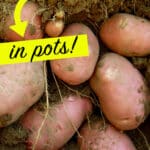



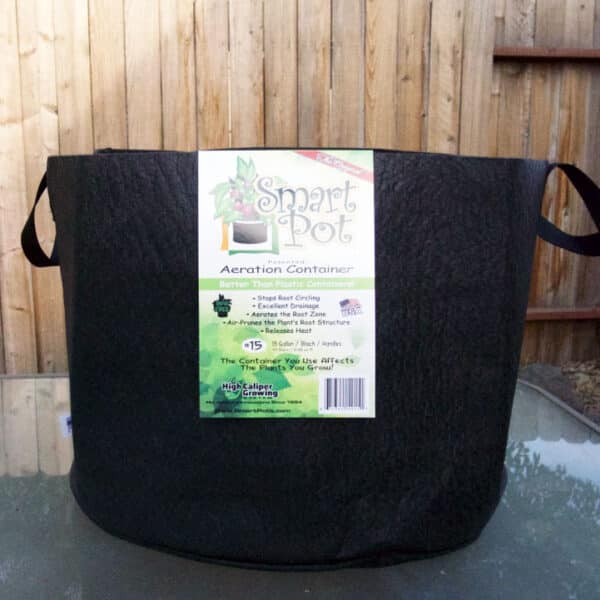
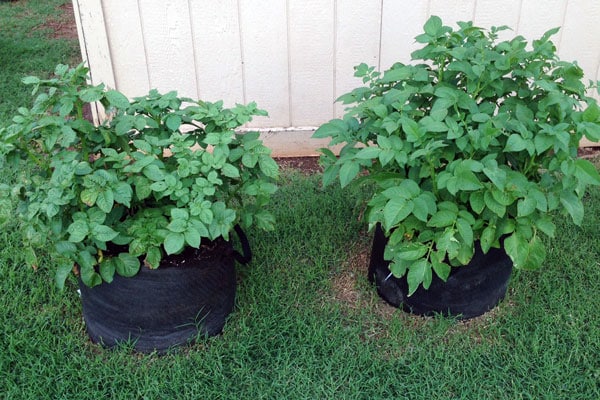
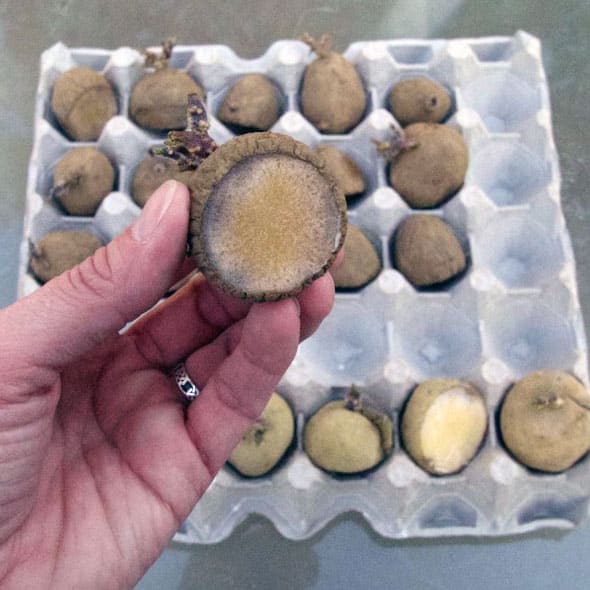
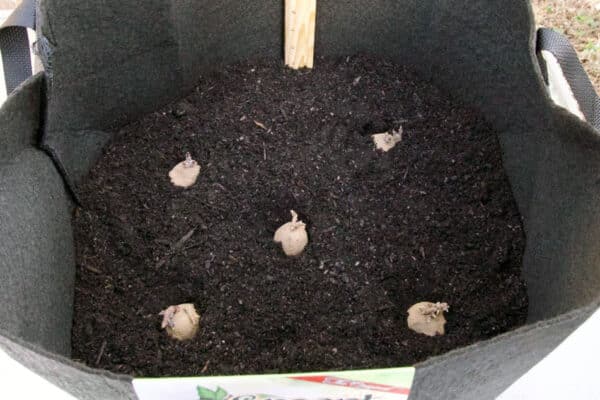
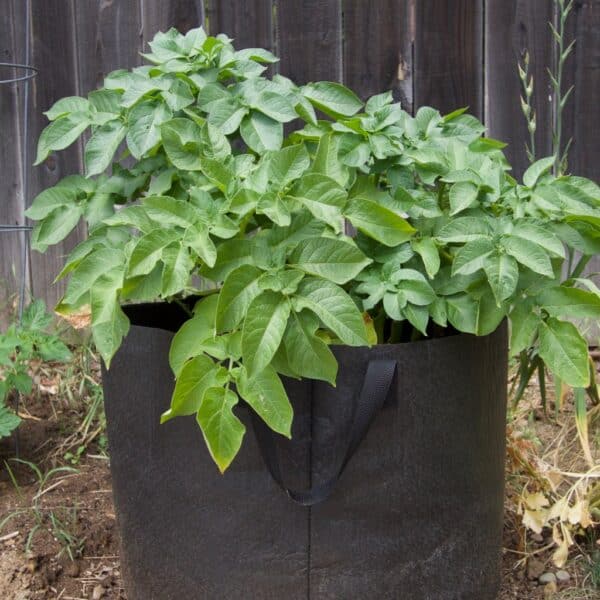
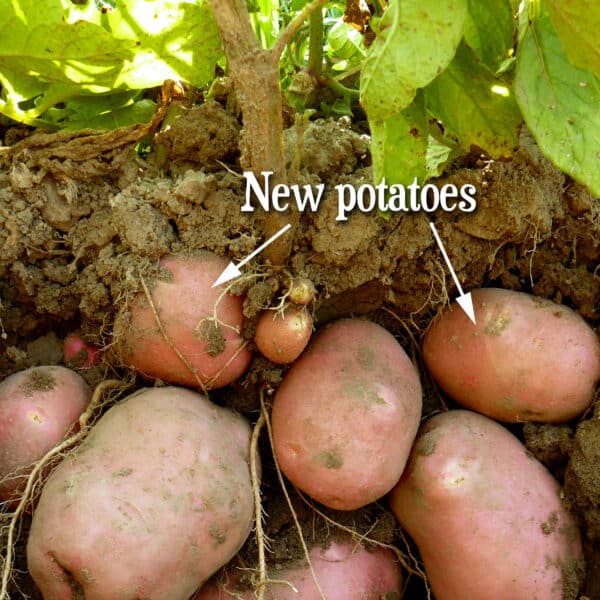
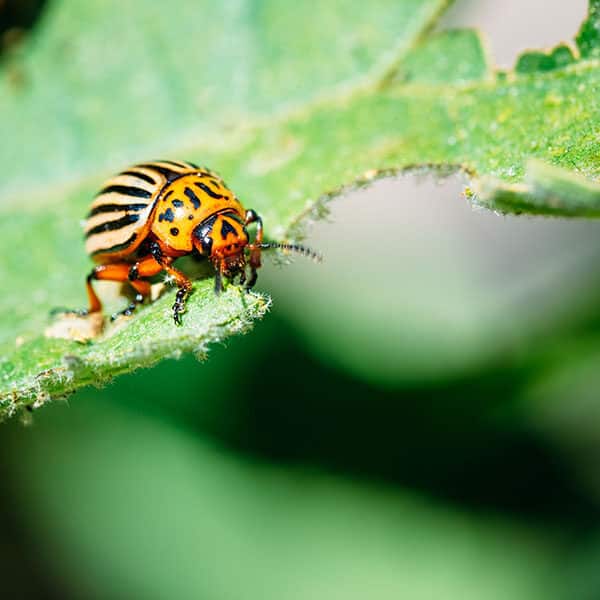
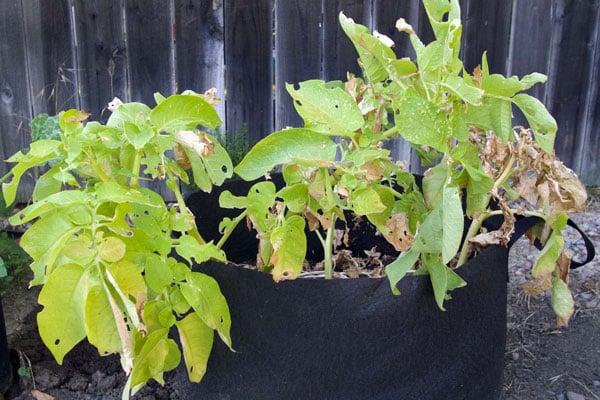


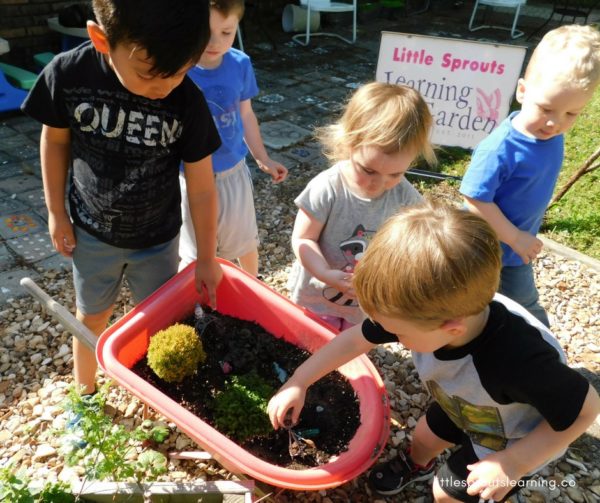
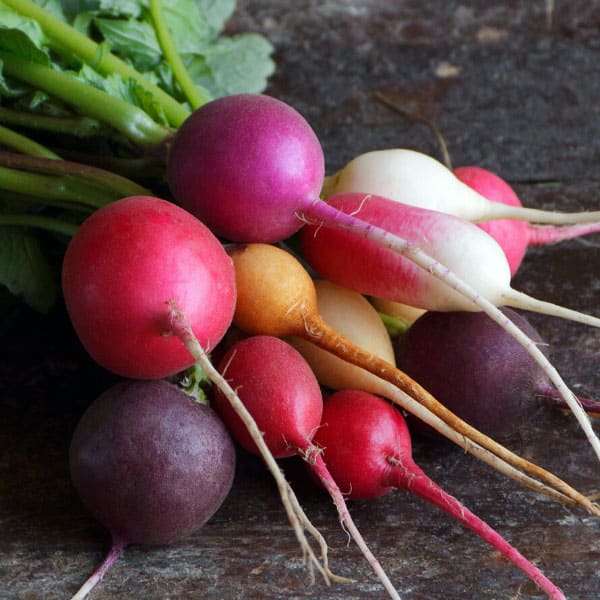
Anything specific about watering them once they’re freshly planted?
Enjoyed she article, I have never grown potatoes and I never grown anything in pots. I purchased 4 fabric pots and plan on using 2 of them for potatoes and will look for something else for the pots.
Your article explained every step with easy to comprehend .. I live on the coast in Connecticut, my plan is to start the plantings in early April.
Wish me luck
I also live in southeastern ct and it’s also our first year growing potato in bags… kindred spirit
What an incredibly informative, easy-to-understand article! Thank you so much! I am really excited about growing potatoes this year. I’m also looking forward to the newsletter!
I enjoyed the article a lit. Never grew potatoes in a pot, looking forward to trying it. I’m a widow oh w and 78 years old. This method would work better for me. You cant get seed potatoes this time of year and they seem to li kg e coo li or temps. I live in NC Florida. Could I still grow so m.j e. Temps are already in the high 80’s. Thanks, Dot